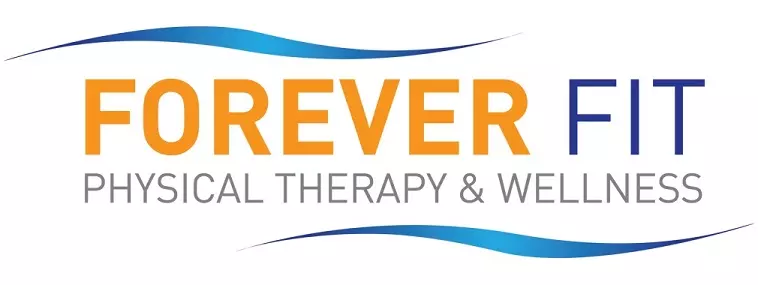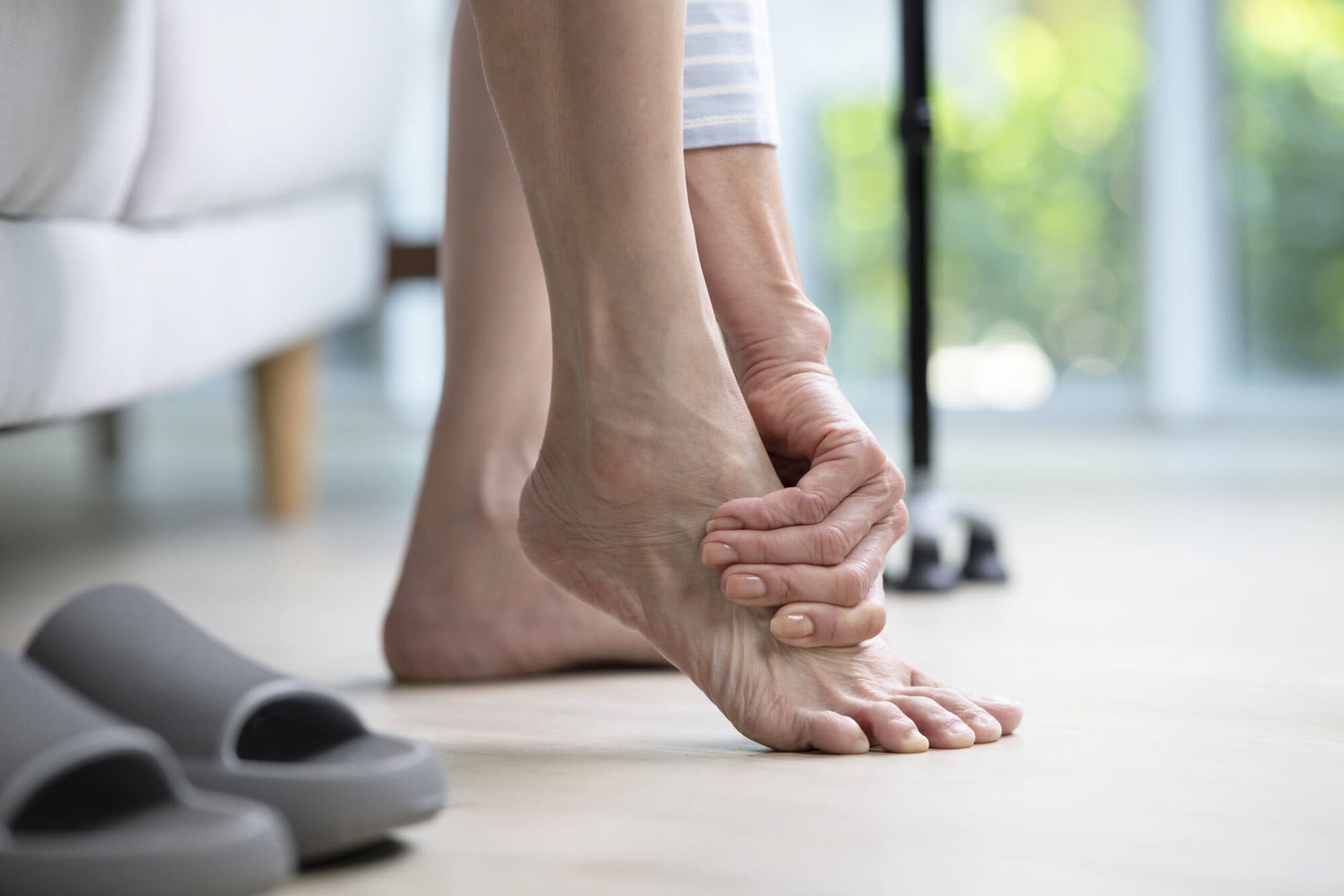Nagging pain on the top of your foot can creep into everyday life and make even simple activities — like walking to your car or standing at your desk — uncomfortable or painful. Whether the pain started after a long hike, a run in unsupportive shoes or appeared out of nowhere, it’s important to address it early and effectively.
At Forever Fit Physical Therapy and Wellness, we see many patients dealing with this type of discomfort. Our approach is grounded in empathy, education and evidence-based care. We believe that lasting relief begins with a clear understanding of your body, the source of your pain, and what steps will help you heal. In this article, we’ll explore the causes of top-of-foot pain and explain the physical therapy techniques that can help you get back on your feet comfortably and confidently.
What causes pain on the top of your foot?
Pain on the top of the foot often points to underlying musculoskeletal issues. Understanding the root cause can guide treatment and prevent the condition from worsening. Here are the most common culprits:
- Overuse or repetitive strain – Daily activities like walking, standing for long periods or running (especially without proper footwear) can lead to inflammation of tendons and joints.
- Extensor tendinitis – Inflammation of the tendons that run along the top of the foot. This often happens when shoes are too tight or after sudden increases in activity.
- Stress fractures – Small cracks in the foot’s bones (commonly the metatarsals) from repeated impact or overtraining. According to a StatPearls study, stress fractures in the bones in the midfoot (metatarsals) make up 25% of all stress fractures.
- Nerve impingement – Conditions like peripheral neuropathy or a pinched nerve in the foot or ankle can lead to pain, tingling or numbness.
- Poor footwear or foot mechanics – Shoes lacking arch support or a proper fit can place extra pressure on the top of the foot, aggravating pain.
One common misconception is, “If I rest it, the pain will just go away.” While rest may offer temporary relief, without identifying the source of the issue, the pain often returns. Physical therapy can help address the root cause and prevent recurrence.
Why physical therapy is a powerful solution
Physical therapy does more than treat symptoms; it identifies and addresses the source of your pain. It’s an ideal approach for top-of-foot pain because it offers:
- A noninvasive alternative to surgery or medication
- Personalized care based on your movement patterns and lifestyle
- Guided recovery through strengthening and stretching
- Patient education for long-term relief
Many studies support the effectiveness of physical therapy in treating musculoskeletal conditions. For example, research published in the Journal of Orthopaedic & Sports Physical Therapy shows that early PT intervention for foot and ankle pain leads to faster recovery and reduces the need for imaging or more invasive treatments.
Physical therapy techniques we use to relieve top-of-foot pain
Our physical therapists at Forever Fit use a comprehensive, whole-body approach to treatment. Here are some techniques we may use to help you find relief:
1. Thorough assessment and custom care plan
We begin with a detailed evaluation that includes your health history, activity level, symptoms and goals. A hands-on exam helps identify issues in joint mobility, muscle balance or movement patterns that may be contributing to your pain.
2. Manual therapy to reduce protective tension
Manual therapy, such as joint mobilizations and soft tissue techniques, can help ease stiffness and improve function. For example:
- Gentle massage or pressure techniques to reduce muscle guarding
- Instrument-assisted soft tissue mobilization (like the Graston Technique®) when appropriate
Myth: “Scar tissue can be broken up manually.”
Reality: While it’s a common belief, physical therapists cannot break up scar tissue. Instead, we focus on reducing protective tension and guiding tissue remodeling through safe movement.
3. Stretching and strengthening
Therapeutic exercise is central to physical therapy. Depending on your condition, your PT may prescribe:
- Toe curls and marble pickups to strengthen intrinsic foot muscles
- Calf stretches to improve ankle mobility
- Resisted dorsiflexion exercises to target the muscles on the front of your leg and foot
- More advanced weight-bearing foot and ankle exercises to progress strength and foot stability.
These exercises support proper foot mechanics and relieve stress on painful areas.
4. Gait analysis and retraining
A subtle change in your walking or running pattern could be the source of your pain. We’ll analyze your gait to identify imbalances, then offer real-time feedback and drills to promote healthier movement. This reduces repeated stress and prevents future flare-ups.
5. Footwear and orthotics guidance
Your shoes matter more than you think. We’ll assess your current footwear and foot shape to determine if they’re providing enough support. If needed, we may recommend:
- Footwear with a wider toe box
- Shoes with better arch and heel support
- Over-the-counter or custom orthotics for alignment
6. PEACE & LOVE: A holistic recovery framework
Instead of RICE (Rest, Ice, Compression and Elevation), we use the PEACE & LOVE method:
PEACE:
- Protection – Avoid activities that aggravate the pain
- Elevation – Reduces swelling
- Avoid anti-inflammatories – In some cases, they may interfere with natural healing
- Compression – Promotes circulation
- Education – Understand your body and recovery process
LOVE:
- Load – Gradually return to normal activity
- Optimism – A positive mindset improves outcomes
- Vascularization – Light aerobic activity promotes healing
- Exercise – Targeted movement rebuilds strength and mobility
What to expect at Forever Fit
Working with Forever Fit means receiving one-on-one care from a licensed physical therapist who prioritizes your comfort and progress. We:
- Actively listen to your concerns and goals
- Create treatment plans based on evidence and your needs
- Offer encouragement and education at every step
With multiple locations in Maryland, including Bowie, Rockville, Silver Spring and more, and telePT options available, we make access to care convenient.
When to seek help
Don’t wait until the pain becomes unbearable. You should consult a physical therapist if:
- You’ve had foot pain for more than a few days
- The pain is worsening or spreading
- Your ability to walk, stand or exercise is limited
- You’ve tried self-care with little improvement
Early intervention often means faster recovery and fewer complications.
FAQs about top-of-foot pain
Q: Should I stop exercising completely?
A: Not necessarily. Your physical therapist can help you modify your activities and keep you moving safely.
Q: Can foot pain be related to knee or hip issues?
A: Absolutely. Poor biomechanics in one part of the body can lead to compensation and pain elsewhere.
Q: Will I need custom orthotics?
A: Not always. In many cases, the right exercises and better footwear are enough.
Take control of your foot health
Top-of-foot pain can be frustrating, especially when it limits your movement and independence. But with the right support, you don’t have to live with it. Physical therapy offers a proactive, personalized and highly effective way to relieve pain and prevent it from coming back.
Ready to move freely and live fully again? We’re here to help you! Give us a call today or fill out our appointment request form to get your initial appointment scheduled with us.

